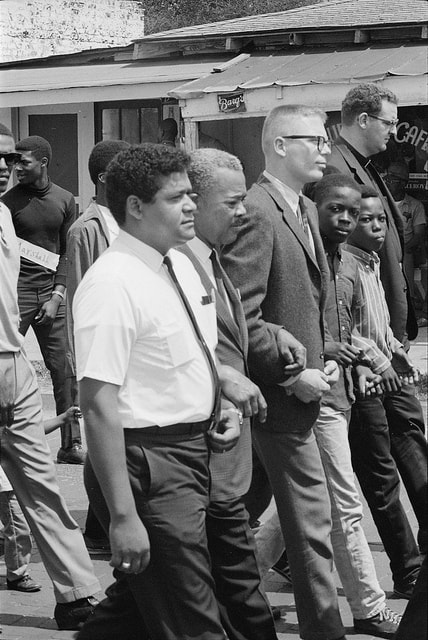Content This lesson is the introduction to the Cause unit, which asks students to think about a cause they would be willing to stand up for, even if it required great personal sacrifices. By the end of the unit, students will have written a short essay that includes an introduction, the problem, what should be done, what they can do individually and a conclusion. They will also create a collage that represents their cause.
This lesson will introduce different historical and current day civil rights leaders, asking students to identify the individuals and their causes. Then, students will begin brainstorming the cause that’s important to them.
Process Students will have read about Cesar Chavez in a previous lesson. I will use a Prezi to start today’s lesson, using student participation to identify the different leaders and their causes. There are some leaders that students may not recognize, but the causes are varied and relevant to their daily lives. We will also discuss what elevates a cause to international recognition. The students will then brainstorm causes that are important to them personally.
Product At the end of the lesson, students will have identified their cause for the project. They will then begin working on the first draft of their topic sentence and engage in a peer review process that will extend into the next lesson.
Evaluation Students will not be expected to identify all the leaders, but I hope that the presentation will lead to a conversation about the different causes and the overall idea that there are issues that are worth taking a stand for, even if it leads to personal sacrifices. Students will demonstrate understanding as they continue with the unit and create a short essay.
What kinds of thinking will students need to do to participate in the lesson? This lesson will ask students to remember what they have already learned about historical figures and world history, as well as analyzing what causes are important to them personally.
To what extent do students have options or choices regarding these lesson components? As this is an introduction, student ownership is limited to demonstrating the information they learned last year. Student ownership will increase as they identify their personal cause and begin their essays. They will also have full control of the art portion of the unit, creating their collage. They will work together to peer edit their essays throughout the process.
Personal Reflection This is my first experience co-teaching with my cooperative teacher to introduce a unit and my first time using Prezi as a tool for student discussion. I’m not sure how the class will react to the discussion component, as this is only our fourth class together, but I hope I’ll be able to engage students into a deeper level of conversation, beyond yes and no answers. Thanks to my EdMethods classmates for their help in designing this lesson!
Image Credit: Mississippi Department of Archives and History
April 8, 1968


A really cool unit/ lesson. I think the kids will really be able to engage in this topic, especially after they are inspired by C. Chavez et al. Not only that, they will have the freedom to choose their topic and give their own explanations, while demonstrating higher order thinking. Ding!Ding! Ding!